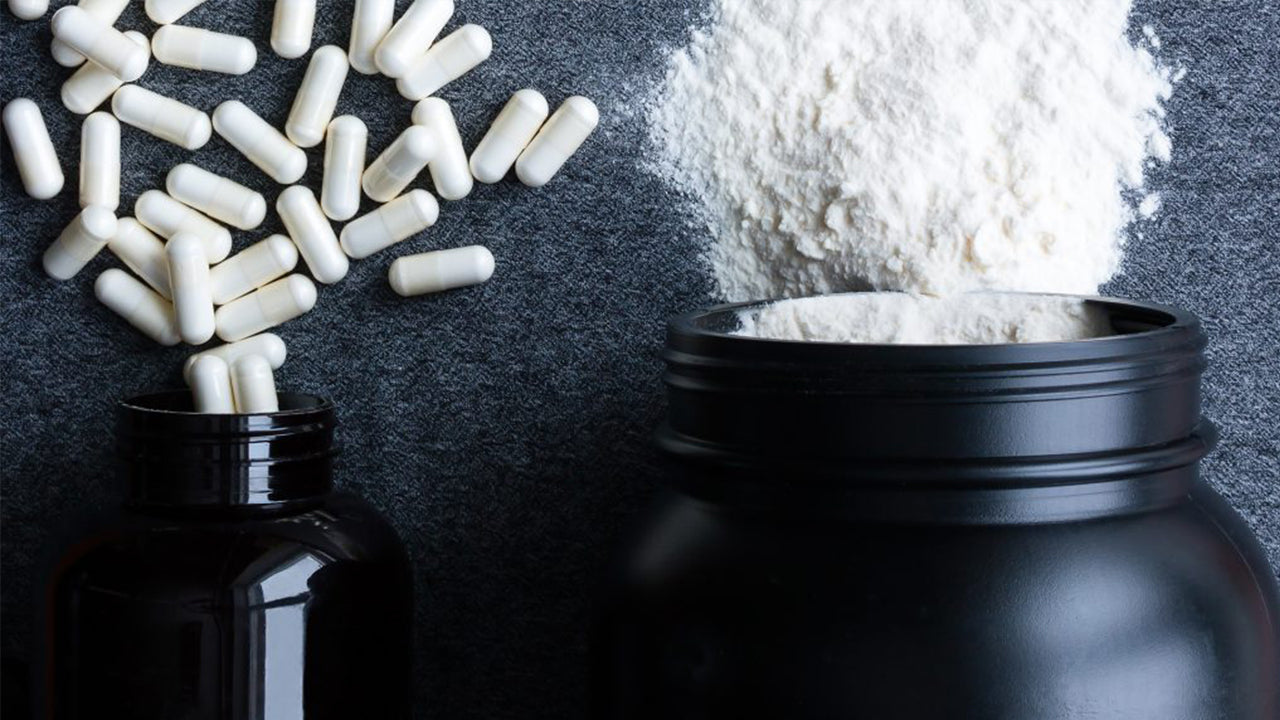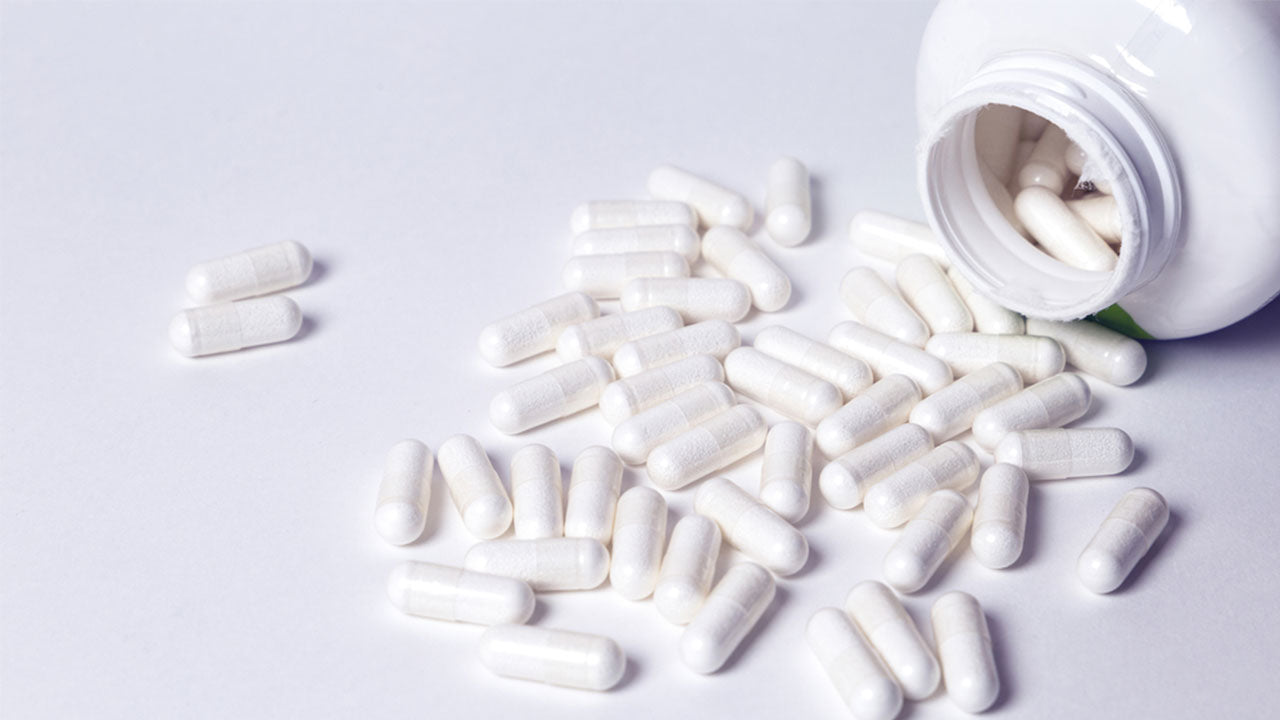Phenylalanine Supplements: What to Know Before You Buy
 By: by Amino Science
By: by Amino Science

Phenylalanine is one of the nine essential amino acids (EAAs). Like the other EAAs, this building block of protein is not produced in the body and must be obtained through dietary sources. There are also three different forms of phenylalanine—D-phenylalanine, L-phenylalanine, and DL-phenylalanine (DLPA). The L-form is the natural form used by the body in protein building, the D-form is the synthetic mirror image of the L-form and is purported to act as a painkiller (though studies have been conflicting), and the DL-form is a mixture of the two. Phenylalanine supplements are available as all three types.
One of phenylalanine’s most notable functions is as a precursor of another amino acid—tyrosine. Tyrosine is converted into both thyroid hormones and a number of brain chemicals, including dopamine, epinephrine, and norepinephrine.
Dopamine, epinephrine, and norepinephrine affect mood, focus, and other facets of brain function. Consequently, phenylalanine has been recommended as treatment for conditions as varied as memory problems, Parkinson’s disease, depression, and chronic pain.
But do phenylalanine supplements really live up to the hype? Here’s what you need to know before you buy.
Phenylalanine: The Basics
As stated earlier, phenylalanine, like other EAAs, must be obtained from dietary sources. The sources with the highest amount of phenylalanine include:
- Meat
- Poultry
- Eggs
- Fish
- Beans
- Nuts
Once obtained from the diet, phenylalanine is then used by the body to assist other amino acids in the production of protein. In addition, it’s also converted into the amino acid tyrosine, which, as we just discussed, is used to make dopamine.
Dopamine is an important neurotransmitter that can be either excitatory or inhibitory depending on where it is in the brain and what receptor it binds to. Dopamine is responsible for feelings of pleasure and alertness and is also the precursor for the production of epinephrine and norepinephrine.
Epinephrine and norepinephrine, in turn, can act as either neurotransmitters or hormones and are responsible for the so-called fight-or-flight response that prepares our bodies to fight or flee when we feel threatened.
Because phenylalanine is so ubiquitous in most diets, phenylalanine deficiency is uncommon. However, deficiency can occur as a result of a diet low in protein. Signs and symptoms of such a deficiency may include:
- Impaired memory
- Decreased alertness
- Depression
- Confusion
- Fatigue
How Phenylalanine Gets into the Brain
Phenylalanine is rapidly transported into all cells in the body, including those in the brain. However, because the brain is protected from the simple diffusion of most substances (including amino acids) by the semipermeable blood-brain barrier, phenylalanine enters the brain like other amino acids—by way of a specialized transporter.
The same carrier system also transports tyrosine, tryptophan, and the branched-chain amino acids, leucine, isoleucine, and valine. Together, these are known as the large neutral amino acids (LNAAs). And because only a limited number of LNAAs can be transported into the brain at any one time, they tend to compete with one another for access.
While the branched-chain amino acids are not themselves precursors of neurotransmitters, they can have a significant impact on neurotransmitter production via their effect on the transport of other LNAAs into the brain. A change in the concentrations of the branched-chain amino acids will correspondingly affect the entry of phenylalanine, tyrosine, and tryptophan into the brain, potentially altering brain chemistry.
As stated earlier, phenylalanine and tyrosine are precursors for the production of dopamine, epinephrine, and norepinephrine. Tryptophan, however, is the precursor of serotonin, which plays a key role in regulating sleep, appetite, and well-being.
To maintain balance in the brain’s uptake of the precursors of dopamine and serotonin, the balance of LNAAs in the blood must be maintained as well.

Liver and Kidney Function: Effect on Phenylalanine Metabolism
Virtually all of the enzyme (phenylalanine hydroxylase) responsible for the breakdown of phenylalanine into tyrosine is found in the liver and kidneys.
The body breaks phenylalanine down into tyrosine as a way of regulating its availability. In other words, when phenylalanine blood concentrations are high, more phenylalanine is broken down into tyrosine, and when phenylalanine levels are low, its breakdown into tyrosine slows.
This process remains steady even in individuals with compensated cirrhosis. However, the metabolism of phenylalanine does eventually become impaired in those with end-stage liver or kidney disease.
Because of this relative efficiency in metabolism, phenylalanine dietary supplements are considered generally safe in individuals with normal kidney and liver function.
Phenylketonuria (PKU)
As just discussed, the key metabolic reaction that breaks down phenylalanine involves phenylalanine hydroxylase. PKU is an inherited disorder in which a person is born without the gene necessary to produce phenylalanine hydroxylase. Without this enzyme, levels of phenylalanine in the body may become toxic and lead to serious health issues, such as brain damage, seizures, and behavioral and developmental problems.
Fortunately, PKU is not common, occurring in only about 1 out of every 10,000 to 15,000 births. Further, with early screening and adherence to a low-phenylalanine diet, children born with the disorder can lead relatively normal lives.
Phenylalanine and Aspartame
Aspartame is an artificial sweetener composed of phenylalanine and aspartate (also an amino acid). Although aspartame remains a controversial food additive, the U.S. Food and Drug Administration (FDA) continues to describe it as “one of the most thoroughly tested and studied food additives the agency has ever approved.”
However, the FDA has set an allowable dose of aspartame at 40 milligrams per kilogram of body weight. Therefore, the upper limit for someone weighing 165 pounds (75 kilograms), for example, would be 3,000 milligrams per day.
Diet sodas are the most commonly consumed product containing aspartame, and most 12-ounce diet beverages contain about 190 milligrams of the sweetener. So, according to FDA guidelines, you could safely consume (as far as the aspartame goes) 15 to 20 cans per day, depending on body weight.
Benefits and Side Effects of Phenylalanine Supplementation
The benefits seen with phenylalanine depend on which form you take. For example, a study from 1977 showed that DL-phenylalanine had substantial antidepressant properties, and a 1984 study demonstrated that a combination of selegiline and L-phenylalanine was effective in treating depression. However, studies have not shown D-phenylalanine to be effective in improving symptoms of depression.
In addition, the use of monoamine oxidase inhibitors (MAOIs), such as selegiline (Zelapar) and phenelzine (Nardil), with phenylalanine may result in extremely high blood pressure, so it’s not currently recommended that the two be used together.
Phenylalanine supplements have also been used to ease the symptoms of alcohol withdrawal. And one study has found that a combination of D-phenylalanine, L-glutamine, and L-5-hydroxytryptophan has the ability to alleviate alcohol withdrawal symptoms.
Vitiligo is a skin disease in which patches of skin lose pigmentation. The skin condition occurs when the cells that produce melanin (melanocytes) die or cease functioning. Melanocytes produce melanin via the metabolism of tyrosine, which, as we’ve discussed, is synthesized from phenylalanine.
Consequently, phenylalanine supplements—both oral and topical—may be effective in treating vitiligo. In fact, a 1989 study found that administration of ultraviolet A (UVA) light with either oral L-phenylalanine or oral L-phenylalanine and a cream containing 10% L-phenylalanine was effective in treating vitiligo.
Interestingly, in an unrelated study, researchers found that supplementation with L-phenylalanine prior to exercise increased whole body fat oxidation.
In a study from 2002, researchers found a combination of lofepramine, L-phenylalanine, and vitamin B12 to be effective in relieving symptoms of multiple sclerosis (MS).
And in yet another study, D-phenylalanine was found to be therapeutic for symptoms of Parkinson’s disease, especially rigidity, walking and speech difficulties, and depression. However, other studies have found that phenylalanine interferes with the uptake of L-dopa and is thus contraindicated in Parkinson’s disease.
Early research also led to some hope that phenylalanine would be helpful in the treatment of both attention deficit-hyperactivity disorder (ADHD) and rheumatoid arthritis. However, later studies have shown only mixed results in the use of this amino acid for both pain relief and ADHD symptoms.
If you do decide to try phenylalanine supplements, it’s important to remember not to overdo it. As we mentioned earlier, phenylalanine can be dangerous in people with PKU, but people without the condition can get too much of it as well. For example, according to the Mayo Clinic, large doses of aspartame can cause brain levels of phenylalanine to rise rapidly.
Therefore, both phenylalanine supplements and products that contain aspartame should be used with caution if you take MAOIs, as the combination may cause extremely high blood pressure. You should also use caution if you:
- Take neuroleptics or medications containing levodopa
- Have tardive dyskinesia
- Have a sleep or anxiety disorder
Are Phenylalanine Supplements Right for You?
As we’ve seen, phenylalanine plays an important role in the production of body proteins as well as brain neurotransmitters. And its use as a dietary supplement has been recommended for many conditions with ties to neurotransmitter imbalances.
However, proper brain function results from an appropriate balance of all neurotransmitters. And as we’ve discussed, phenylalanine competes with other amino acids for transport into the brain, so focusing on phenylalanine in isolation may lead to a disruption of the brain’s uptake of other neurotransmitter precursors.
Therefore, to maintain the balance necessary for optimal brain and body health, phenylalanine should be used only as part of a balanced formulation containing all the EAAs.


Up to 25% off Amino
Shop NowTAGS: supplements
Join the Community
Comments (0)
Most Craveable Recipes




 833-264-6620
833-264-6620



















